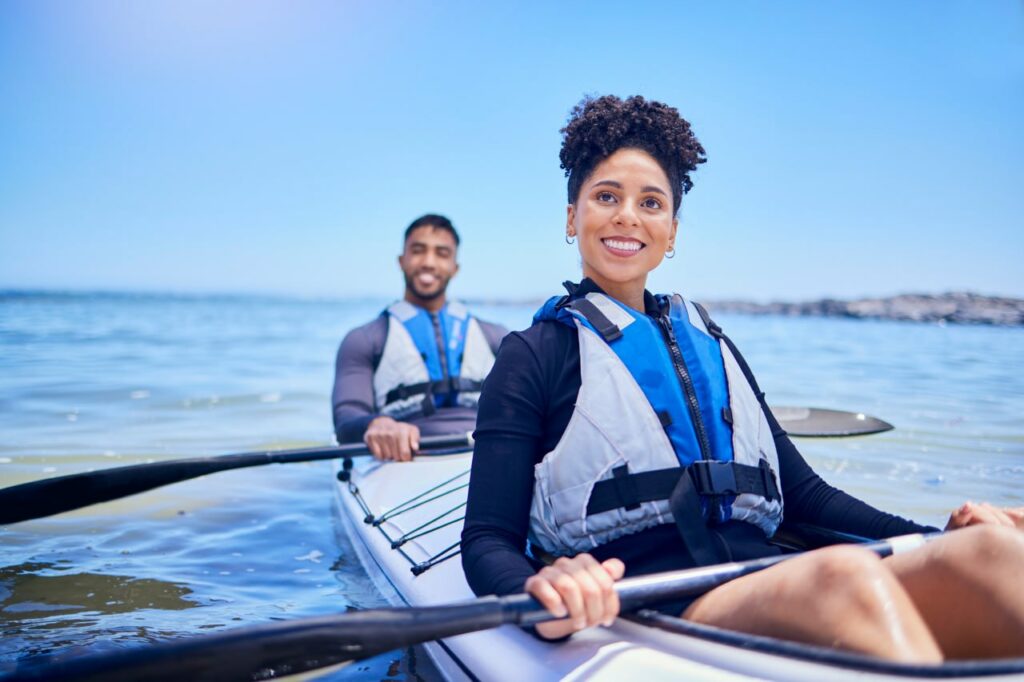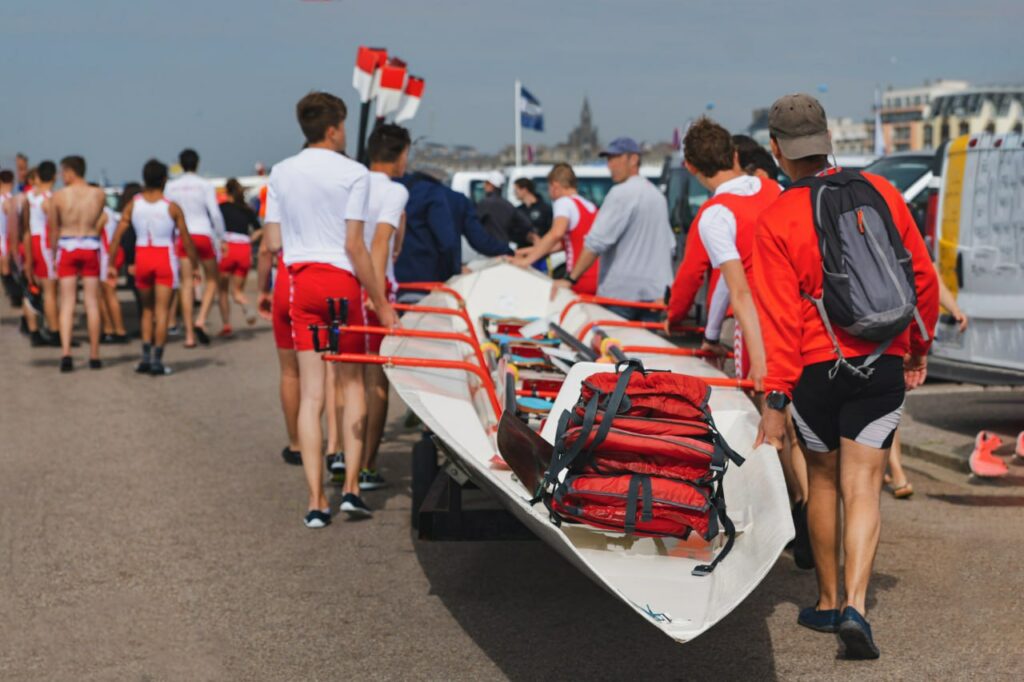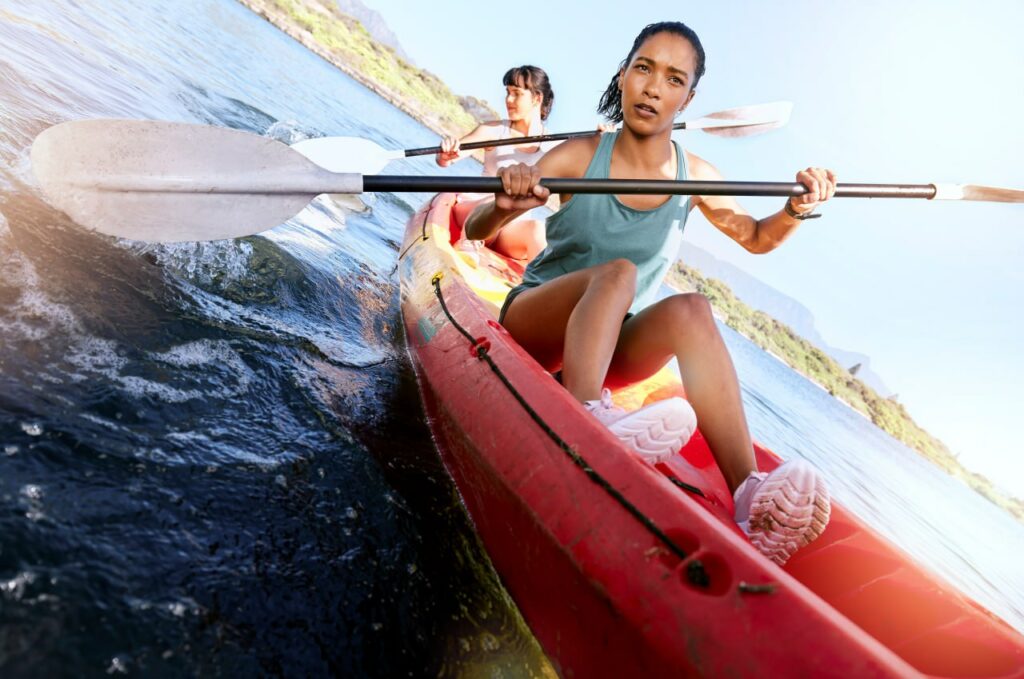Kayaking is a sport that combines the tranquility of gliding through the water with the adrenaline of racing and rapid maneuvering. Each athlete must strike a unique balance between calm and vigor, turbulent flow and serenity. Today, we will take a closer look at this amazing sport, learn about its nuances and try to find out why it is so rapidly gaining popularity around the world.

The Origins of Kayaking
Kayaking goes back thousands of years to the Inuit, Aleut and Yup’ik people of the Arctic region. The first kayaks, originally designed for hunting on inland lakes, rivers and coastal waters, were constructed from sewn animal skins stretched over a wooden frame. These early vessels were adjusted to human size, providing maximum maneuverability and efficiency. Craftsmen who could make a kayak were valued for their weight in gold. The survival of entire families sometimes depended on having a serviceable and fast kayak.
For a long time such boats were the main way not only to travel, but also to get food, transport cargo and the sick.
Transition to Sport
The transition of kayaking from a survival skill to a recreational and competitive sport began in the mid-19th century. The design and construction of kayaks evolved with the advent of new materials, which allowed for mass production and wider availability. By the 20th century, kayaking was firmly established as a popular sport: kayaking clubs emerged, and kayaking competitions were included in major sporting events. A whole range of different competitions emerged, which began to attract athletes from all over the world, raising the prestige of kayaking and its popularity.
Mastering the Art of Kayaking
Learning to kayak is more than just paddling through the water. Proper technique is critical for safety, efficiency and fun. It is virtually impossible to master this skill on your own. Only under the supervision of a certified professional can you master kayak handling. The fact is that a kayak operator must watch not only the boat, but also his or her body. Proper body balance and center of gravity prevents the kayak from overturning. Conversely, if an athlete is constantly fidgeting and fidgeting, he or she is likely to flip over and end up in the water.
This is why many people choose this sport, as it not only helps to develop athletic skills, but also helps to find peace of mind and balance.
Technique and Safety
 Kayaking techniques include different paddling styles, boat handling, and safety precautions. Beginners should learn the basics of paddling, including paddling forward and backward, strokes for turning, and basic bracing techniques to prevent capsizing. Safety training includes recovery from capsizing, understanding water conditions, and navigation. It is the mastering of safety techniques that is of primary importance, they are where learning the basics begins.
Kayaking techniques include different paddling styles, boat handling, and safety precautions. Beginners should learn the basics of paddling, including paddling forward and backward, strokes for turning, and basic bracing techniques to prevent capsizing. Safety training includes recovery from capsizing, understanding water conditions, and navigation. It is the mastering of safety techniques that is of primary importance, they are where learning the basics begins.
The Role of Instruction
Structured lessons with certified instructors can greatly improve kayaking skills and safety. Training programs often include pool sessions where rescue skills can be practiced in a controlled environment, progressing to calm waters and eventually to more challenging conditions as skills improve.
Many novices make the mistake of devoting too much time and attention to pool training. The beginner becomes accustomed to the safe environment of an indoor pool and loses their guard. Therefore, after learning the basics, it is important to move on to swimming in real bodies of water to learn to feel the current and learn to navigate between the waves.
-
The Thrill of Kayak Racing
Kayak racing, one of the most exciting aspects of the sport, showcases the speed, endurance and skill of paddlers in a variety of formats. Let’s take a look at the main types of racing and what they are.
-
Sprint Kayaking
Sprint kayaking, an Olympic discipline, features races over calm water on a straight course with multiple lanes. Distances range from 200 meters to 1000 meters, demanding explosive power and precise technique from competitors.
-
Slalom Kayaking
Slalom kayaking, another Olympic event, involves navigating a kayak through a course of hanging gates on river rapids, requiring agility, precision, and an advanced understanding of water dynamics. Paddlers must pass through the gates in a specific order, with penalties for missed or incorrectly navigated gates.
-
Marathon and Adventure Racing
Marathon kayaking involves long-distance races, often exceeding 20 kilometers, testing the endurance and navigational skills of paddlers. Adventure racing combines kayaking with other disciplines, such as cycling and running, in multi-stage events that can span several days and diverse terrains.
-
The Future of Kayaking
The evolution of kayak sport continues with innovations in equipment, training techniques, and event formats. The growing popularity of kayaking as a recreational activity has led to increased interest in competitive events, with more people taking to the water to challenge themselves and connect with nature.

Environmental and Community Impact
As kayaking grows, so does the awareness of environmental conservation among paddlers. Many kayaking communities engage in clean-up efforts and advocate for the preservation of waterways. Additionally, kayaking events often support local economies and foster a sense of community among participants.
Spectacular Sport
From its origins as a tool for survival to its status as a beloved sport, kayaking offers a rich and varied experience for enthusiasts of all levels. Whether one seeks the tranquility of a solo paddle, the camaraderie of group excursions, or the thrill of competition, kayaking provides an avenue for exploration, challenge, and connection. As we navigate the currents of change, the spirit of kayaking remains a testament to human ingenuity, adaptability, and our enduring relationship with the water that sustains us.

